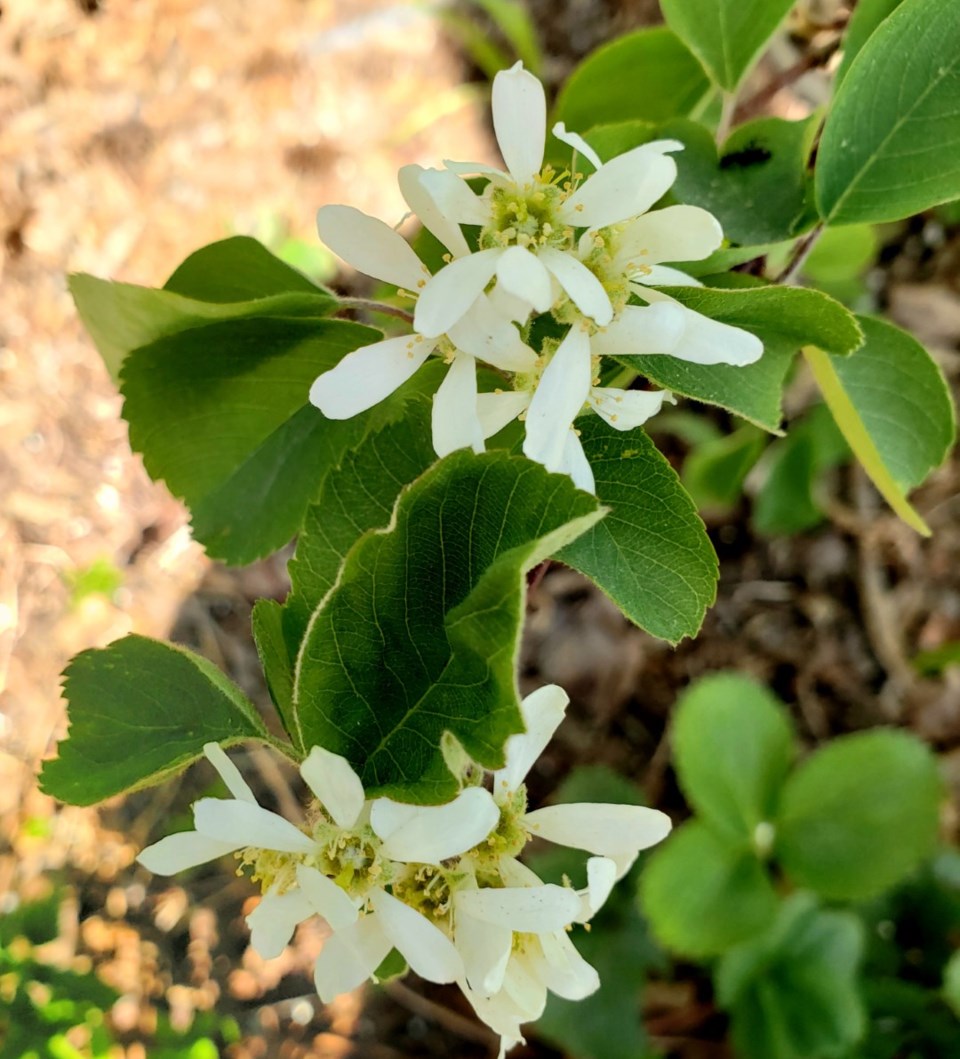Every year it seems we have a different weather pattern as we move into the growing season. Our spring this year has been cool, with many of the leaves still not fully out or just beginning to show that wonderful green of spring. In my garden, although the scilla and tarda tulips have completed their bloom, there are still many more regular tulips that are just now showing colour.
The asparagus is doing a wonderful job of providing us with fresh, tasty greens that we so thoroughly enjoy. However, our soils are dry and everything that is not fully established is needing supplemental watering. I have already watered all the new areas that were planted with perennials last season a couple of times. Looking at the winds and the temperatures and listening to what the plants are telling me, I will be hauling out the hoses again today.
I always think that when the hostas come up – we truly have hit temperatures that are conducive to all the heat-loving things that we grow. I have yet to see any signs of any of the hostas poking through the surface of the soil. I am in one way thankful for that as it seems my spring gardening chores have not all been completed.
Take the hardy (or not so hardy) shrub roses. Some seem to have been hit hard last winter. Remember, that usually by the time June rolls around, we should be able to see what has survived and prune the hardy shrub roses appropriately. Simply prune back those branches that have died or are not growing in a good shrub-like shape. Some roses will bloom more if you prune off the spent blooms so this is the only chore necessary to keep our hardy shrub roses happy!
Right now in my front yard, there are a multitude of blooms. The saskatoon berries are in full bloom, the ornamental crabs are looking spectacular, as are the flowering almonds. The plums and cherries have almost finished their bloom and the only thing yet to boast her beauty is the Ohio buckeye. It is a real pleasure to see the full bloom of our trees and shrubs. Hopefully, we will get rain, but otherwise, I guess I will need to provide the water so necessary to size up the fruit!
Take your lawn mower blades to a professional to have them sharpened. Dull blades make ragged cuts and invite diseases. Clean and sharpen hand tools. If pruning shears are full of dried sap, clean with steel wool and then lightly oil.
As the temperatures rise, and the soil dries, take time to ensure you are watering deeply and thoroughly. If you are unsure how much to water in your perennial beds, take a trowel and dig down a few inches. After watering, the soil should be moist well below the root zone. This encourages deep rooting of your plants which helps them to withstand short periods of drought. Water early in the morning as the temperature is lower and the wind is generally not a problem.
Use a brush to clean out plant pots and containers. Soak them in 1-part chlorine bleach to 9 parts water for 30 minutes to get rid of any disease-carrying organisms which may be present.
As you begin to work in the perennial beds, watch where you put your feet. There are still many new emerging shoots which are very tender. It is the ideal time to mulch around your perennials and to look for budding insect and disease problems. Weeding is such a never-ending chore but short work is made of it by catching those problems early – while the invaders are still small.
And finally, take some time to explore the wonders of all that is available in the local nurseries and greenhouses. Who knows what might follow you home?
Hanbidge is the Lead Horticulturist with Orchid Horticulture. Find us at www.orchidhort.com; by email at [email protected]; on Facebook @orchidhort and on Instagram at #orchidhort. Tune into GROW Live on our Facebook page https://www.facebook.com/orchidhort or check out the Youtube channel GROW https://www.youtube.com/channel/UCzkiUpkvyv2e2HCQlFl0JyQ?




